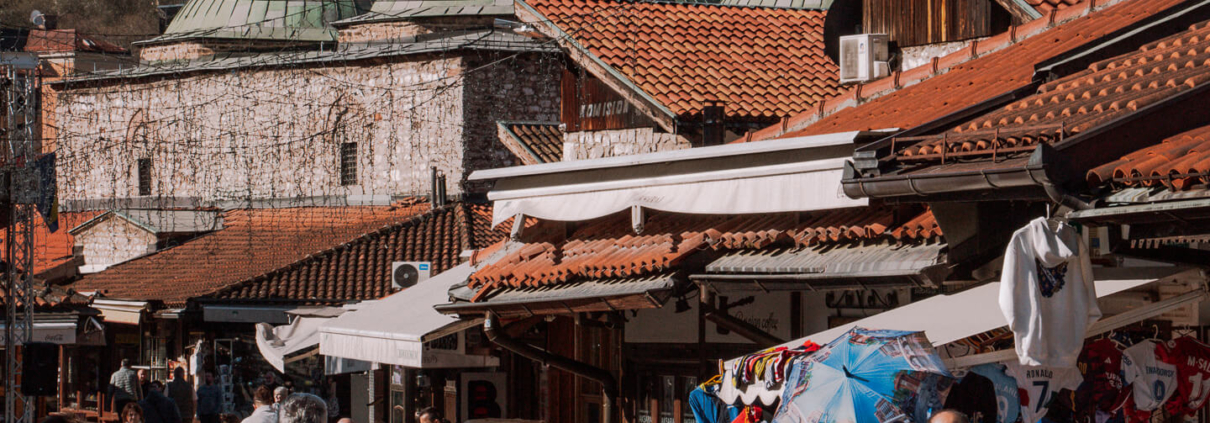Sarajevo Baščaršija: The heart and soul of Sarajevo
Baščaršija is the heart of Sarajevo, the capital of Bosnia and Herzegovina. This old town, also known as Stari Grad, attracts visitors from all over the world and is one of the city’s main attractions – history, culture and religions mix here to create the unique vibe that Sarajevo offers. What do you have to see in Sarajevo’s old town? And what do you need for a visit to the capital of Bosnia? We’ll tell you in this article!
History and culture of Baščaršija
A bazaar from the 15th century
The Baščaršija (baš means main and čaršija means market, i.e. the main market) is the market district of the city and was built in the 15th century. Over the decades and centuries, this winding bazaar has developed into a lively center where you can trace the history of Sarajevo as if on a timeline. Between covered market halls, alleys and mosques, you can immerse yourself in the atmosphere of the Ottoman era.
The historical figure Gazi-Husrev Beg
Gazi-Husrev Beg was an important bey during the Ottoman period and was appointed governor of Sarajevo. With his vision and mission to make the city a trading center, he was responsible for many buildings that still shape the cityscape today – you will see his name on plaques on many buildings. His influence on Baščaršija, the historic city center, is unmistakable, and many of his buildings, such as the Gazi-Husrev Beg Mosque, the Sahat Kula clock tower, the Morića Han inn or the Bezistan covered bazaar, are now cultural landmarks of the city.
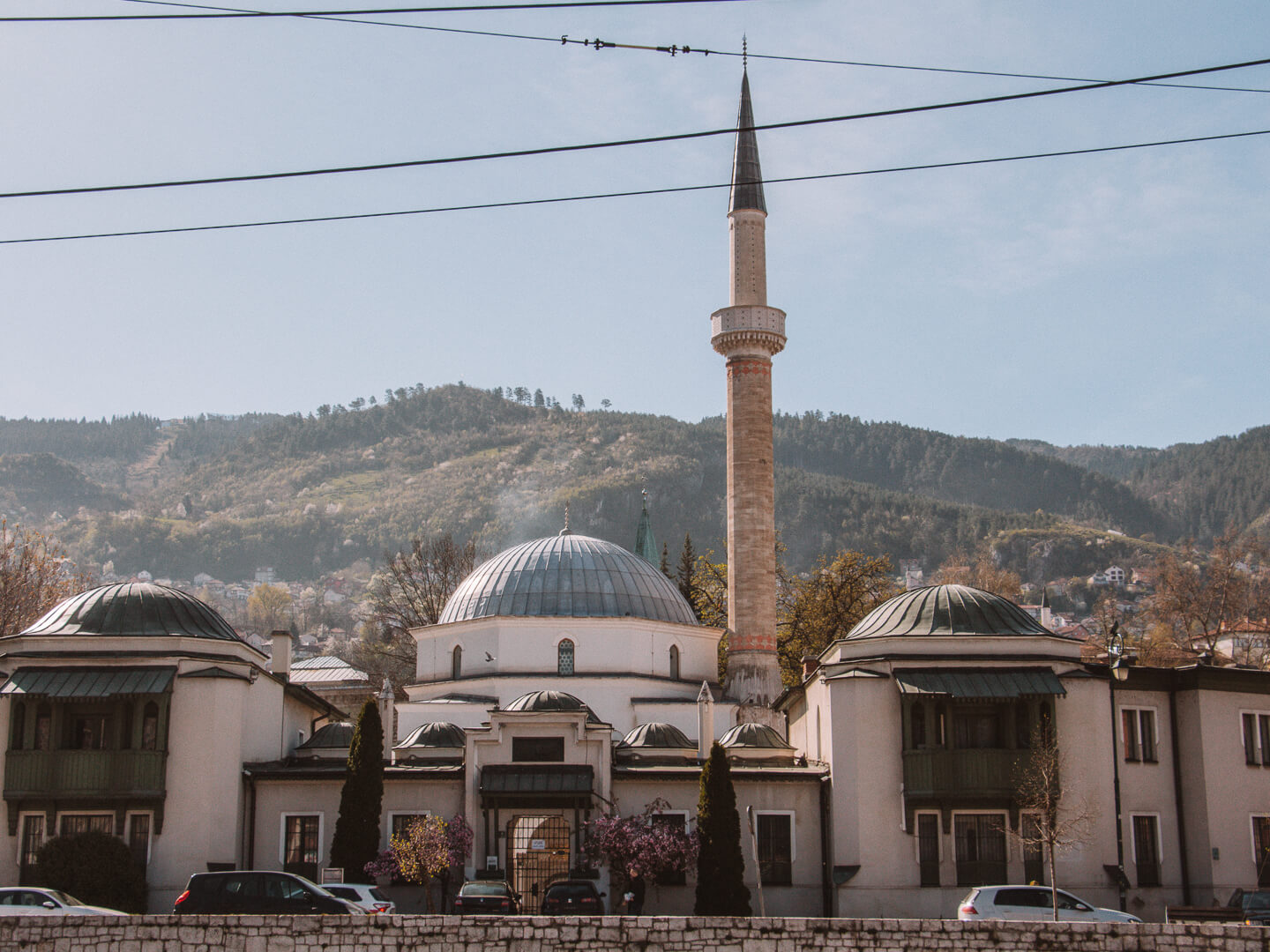
What makes Sarajevo’s old town so special?
Unique architecture: Ottoman, Austrian and Bosnian influences
Sarajevo’s old town is a mixture of the cultural and architectural influences that have shaped Bosnian history. Here you will find the low buildings and narrow streets of the typical Ottoman style, but also chic Art Nouveau buildings that you could see in Vienna. The special charm of Sarajevo is that you can literally walk from east to west and experience different eras.
It is especially exciting to look at old photos – you can see what the historic district used to look like and marvel at the mix of people in traditional clothing who lived and worked there.
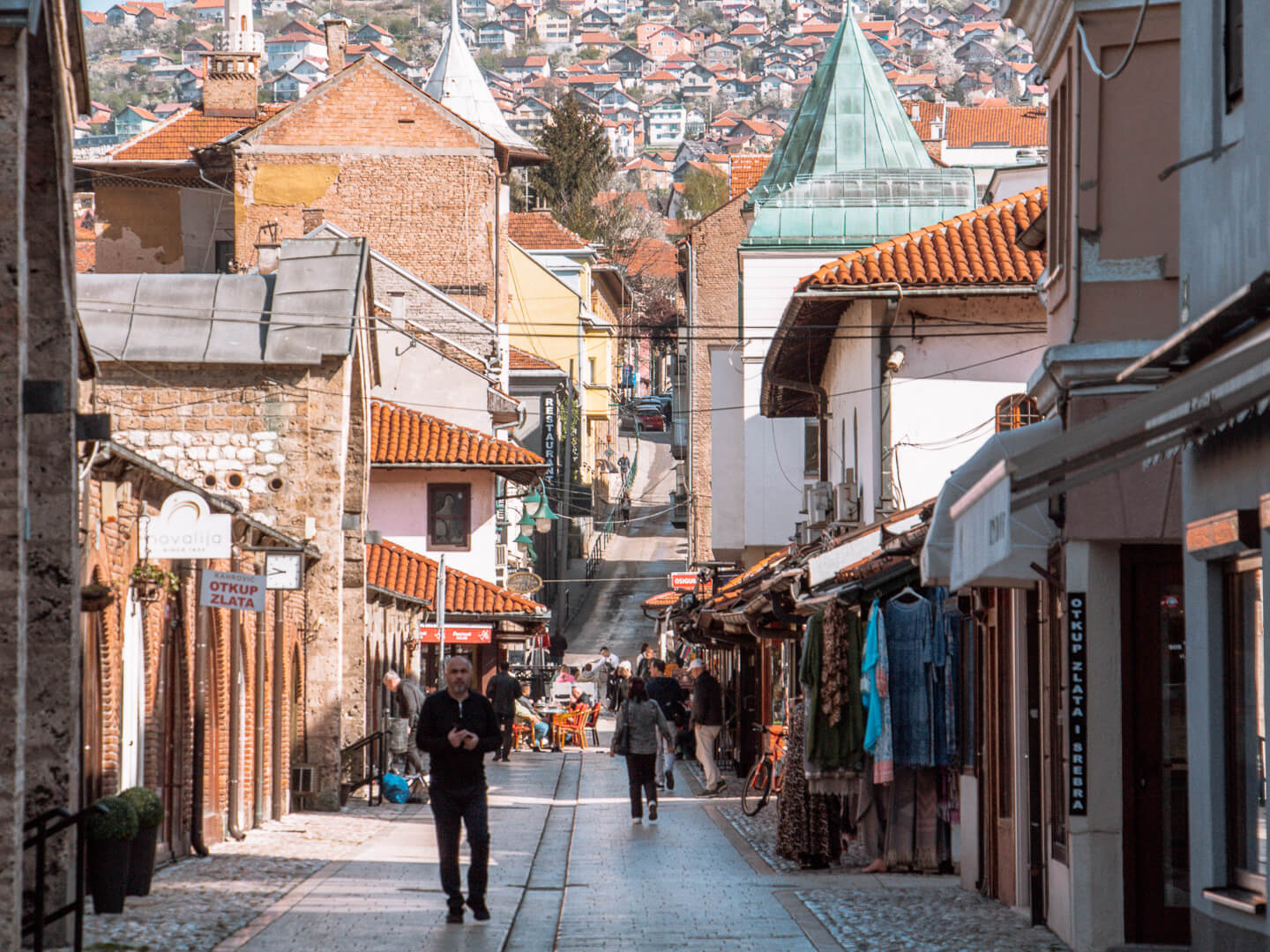
The best things to see and do in Baščaršija
Baščaršija’s main street: Ferhadija
The main street, Ferhadija, is the pulsating heart of the old town and literally connects east and west. Numerous shops and traditional cafes line the street – locals and tourists alike stop off at the street. The most important sight on Ferhadija is certainly the “Meeting of Cultures” symbol, the place where Ottoman and Austrian architecture meet.
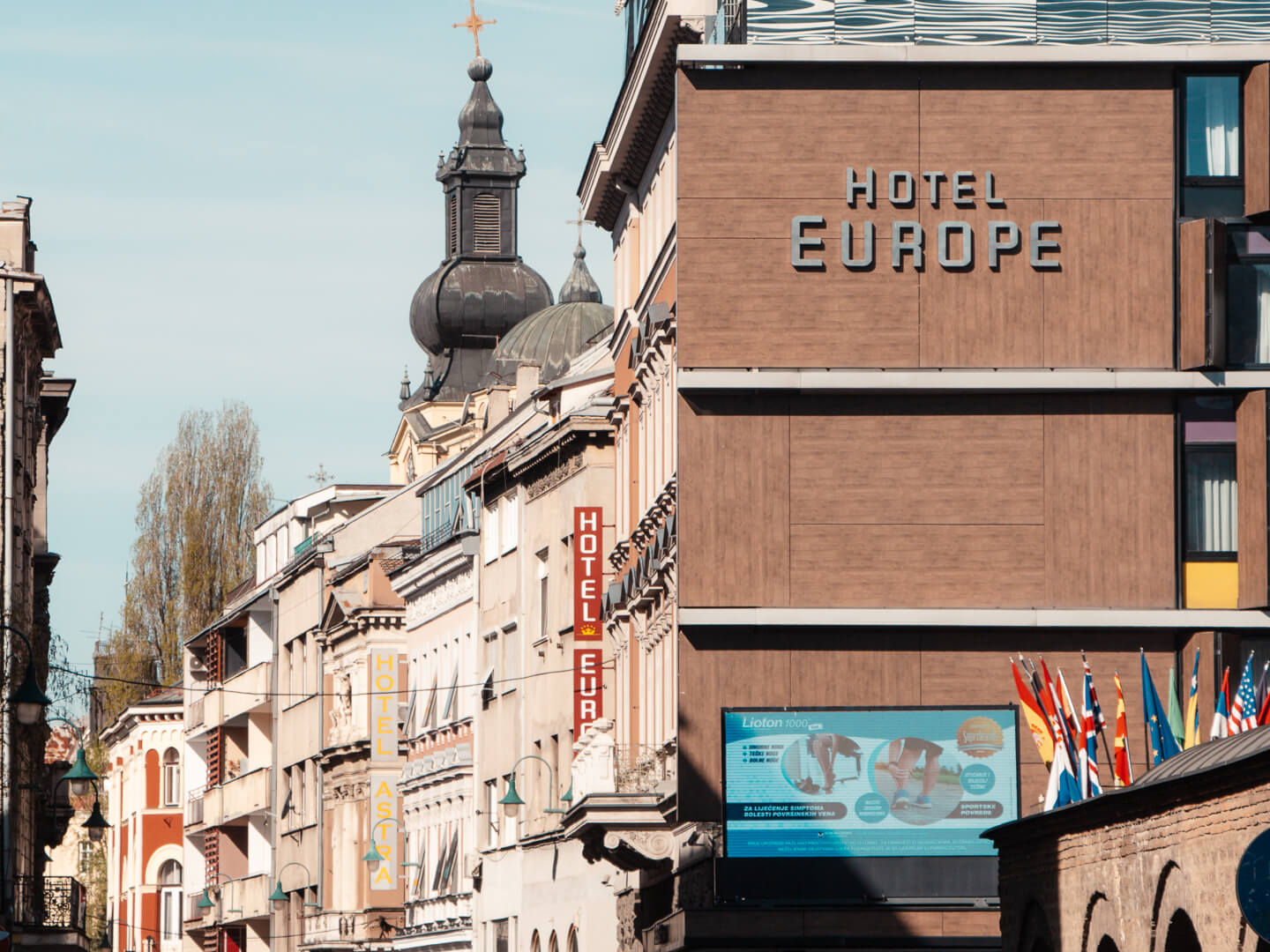
The Sebilj Fountain
The Sebilj Fountain is an iconic meeting point in Baščaršija and a symbol of the city. There used to be numerous such fountains all over the city, but after running water in one’s own home became commonplace, most of them were dismantled – only this one remains.
Another main attraction in the square around Sebilj are the pigeons, which tourists can feed with corn kernels – the square is therefore sometimes called “Pigeon Square” by the town’s residents. If you want to ride on the oldest electric tram in Europe (okay, the carriages are new today, but the route is still the same!), you can get on at the Baščaršija stop .
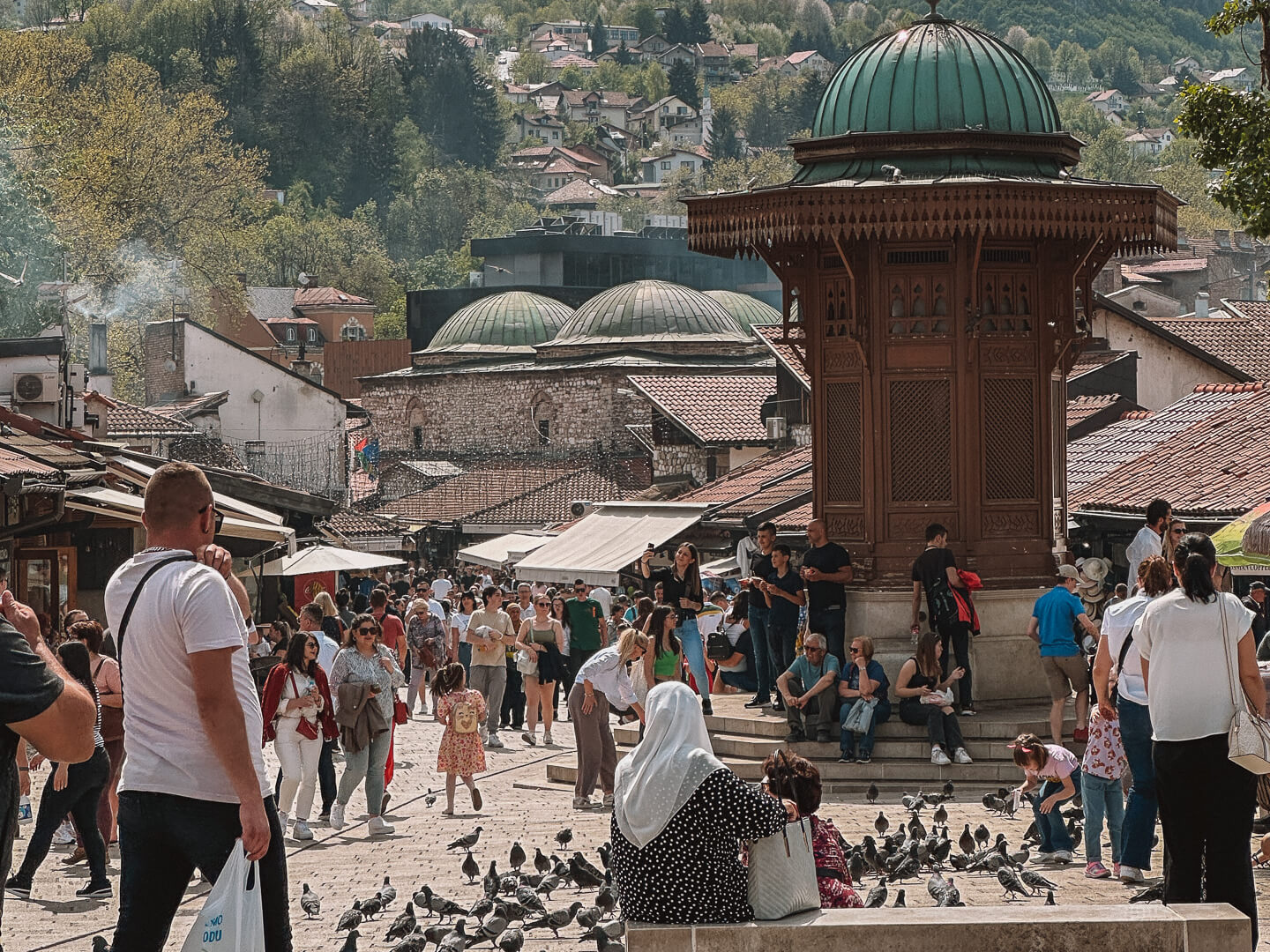
Kazandziluk: The coppersmith street with its unique souvenirs
Right near the Sebilj you will find Kazandziluk, the coppersmiths’ street, where you can buy very special souvenirs: the coppersmiths here still work using traditional methods and most of the pieces you find here are handmade and unique. From cocktail glasses to plates and the famous coffee pots, you are sure to find the perfect souvenir for your loved ones back home. The best way to experience the life and history of this place and other sights in Sarajevo is to take a city tour .

Sahat Kula: The clock tower of Sarajevo
The Clock Tower of Sarajevo (Bosnian: sahat-kula) is located right next to the Gazi Husrev-beg Mosque and, with a height of 30 meters, is the tallest of all Bosnian clock towers. There used to be 21 in total.
The Sahat Kula is the only clock in the world that shows the time according to the moon. At sunset, the time of the Muslim Maghrib prayer, the hands show midnight. The clock has to be set manually every day, which makes it a very special monument in Sarajevo.

Gazi-Husrev Beg Mosque
The Gazi Husrev-beg Mosque in the center of the old town was built in the 16th century and is the largest mosque in Bosnia and Herzegovina and one of the most representative Ottoman buildings in the Balkans. You can visit it outside of prayer times to admire the beautifully decorated interior.

Morića Han
The Morića Han is the last fully preserved caravanserai in Sarajevo and a living testimony to the city’s trading history. This historic inn was built in the 16th century and served as accommodation for travelling traders and their animals. The courtyard of the Han now houses a café where you can enjoy a coffee and soak up the historic atmosphere.

Latin Bridge
The Latin Bridge is world-famous as the place next to which the assassination attempt on Archduke Franz Ferdinand of Austria took place in 1914, an event that sparked World War I. In fact, the assassination did not take place on the bridge, but on the street corner next to it, where you can still see the footprints of Gavrilo Princip today. The Ottoman bridge is nevertheless one of the highlights of a visit to Sarajevo.
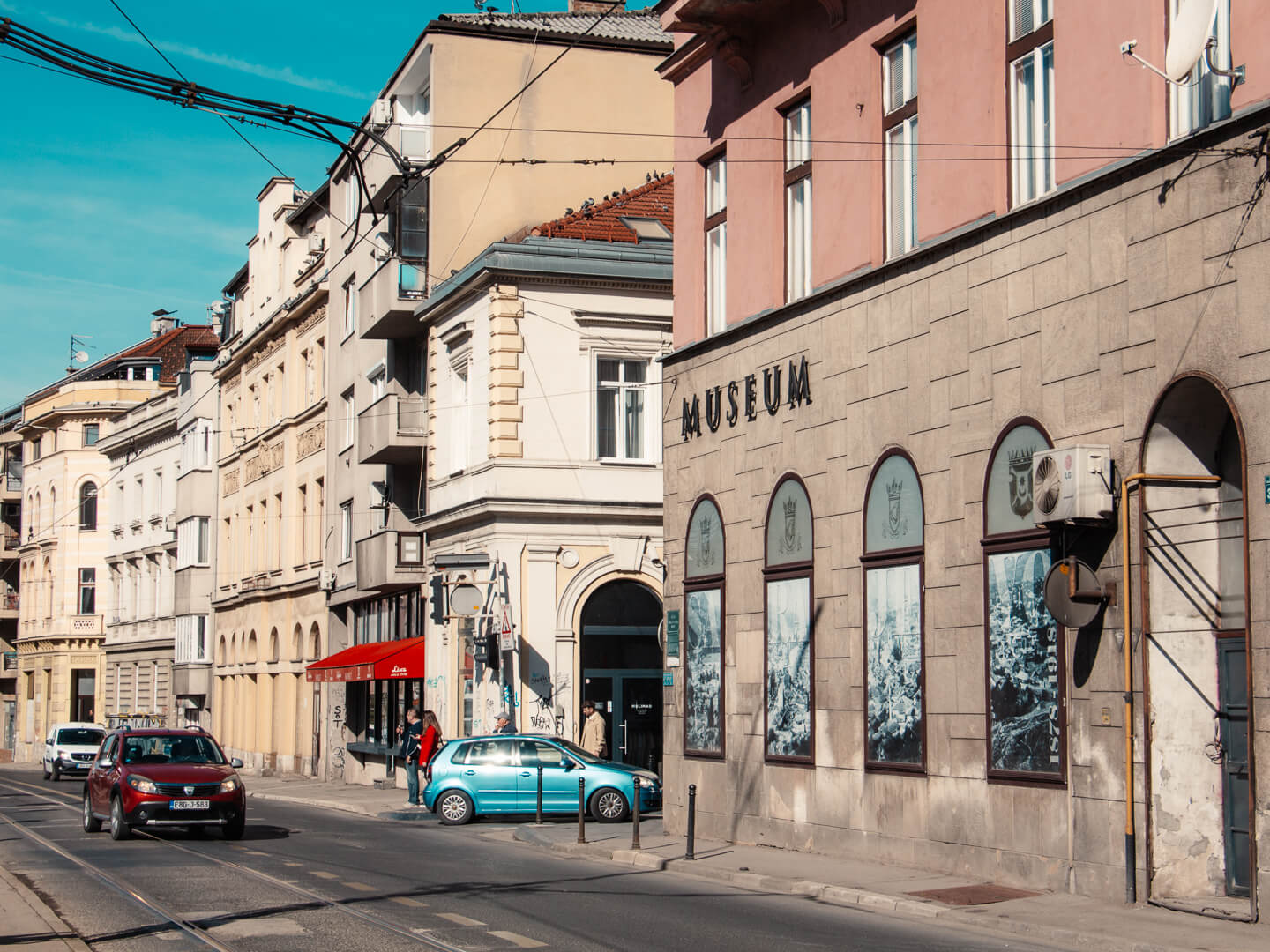
Accommodation in Baščaršija
Do you want to stay in the middle of the historic city center? There are several hotels in Baščaršija where you can stay close to all the sights, but still in a quiet location. Many of the hotels are located in historic buildings or are furnished in a typically Bosnian style. When planning your trip with us, we would be happy to recommend accommodation in the heart of the city.
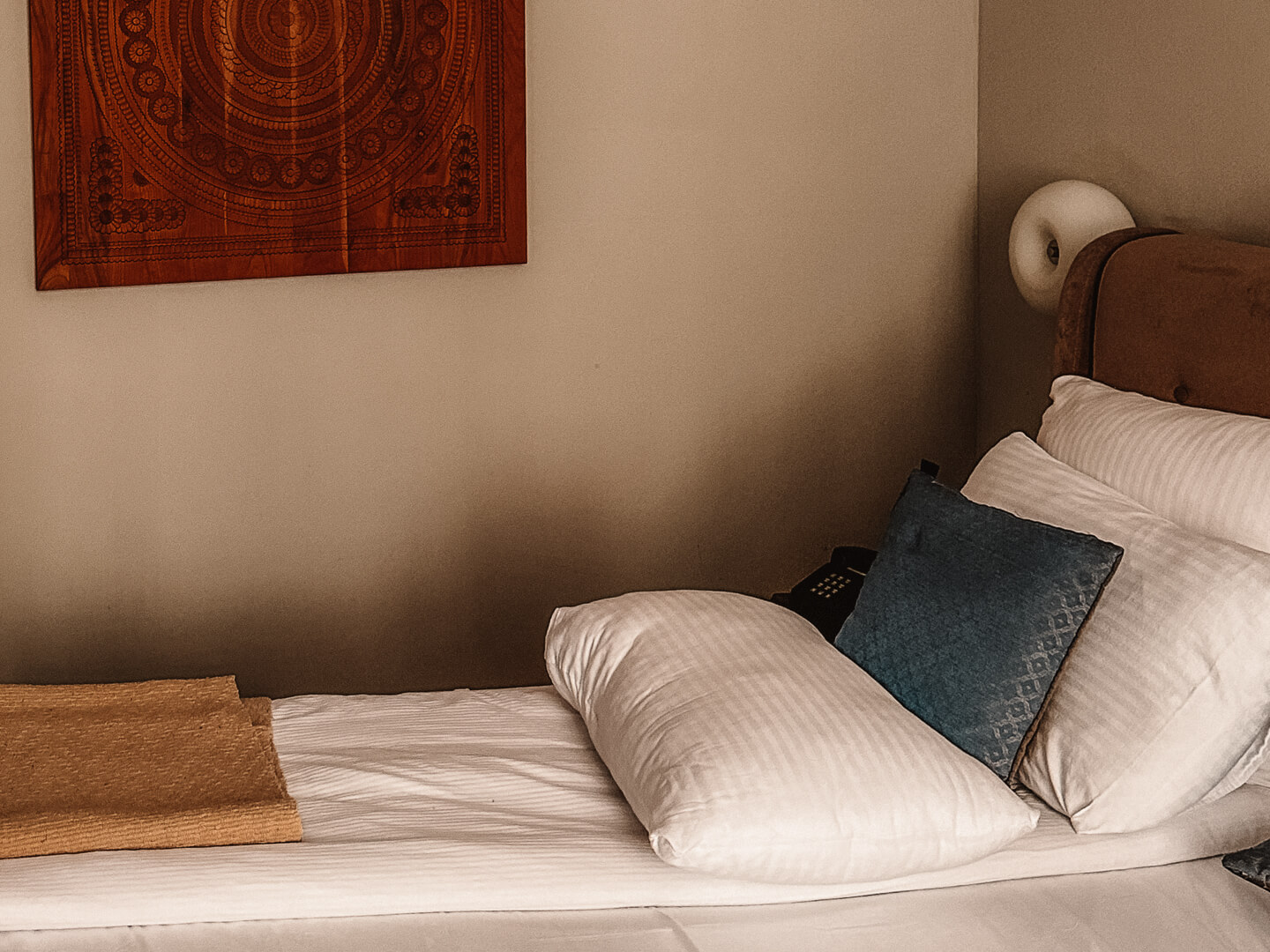
Tips for your visit to Sarajevo’s old town
Baščaršija is not big and can easily be explored on foot. The most important sights are naturally on your way and you can hardly miss them. However, we recommend that you just wander a little through the small alleys and courtyards, where you can best soak up the atmosphere of the city.
Restaurants and cafés
If you go out to eat or have a coffee in Baščaršija, you may notice that you often have to wait in vain for the waiter to pay. It is considered rude if the waiter keeps coming to your table and asking questions. It is best to get up and go pay in the café instead of waiting for the waiter. Tipping is not necessarily expected, but it is appreciated – if the service is good, you can give 10 to 15%.
Security in the old town
A large part of Baščaršija is closed to traffic, but especially in the morning there are delivery trucks on the streets delivering to cafés and restaurants. The day starts a little later here – most shops don’t open until around 10 a.m. Before that, you can sometimes enjoy the peace and unique atmosphere of the old town almost all to yourself.
As the city’s main tourist attraction, we recommend that you keep a closer eye on your bag and cell phone. Even though the police are doing a thorough job of tracking pickpocketing and the number of cases has decreased, it’s better to be safe than sorry.
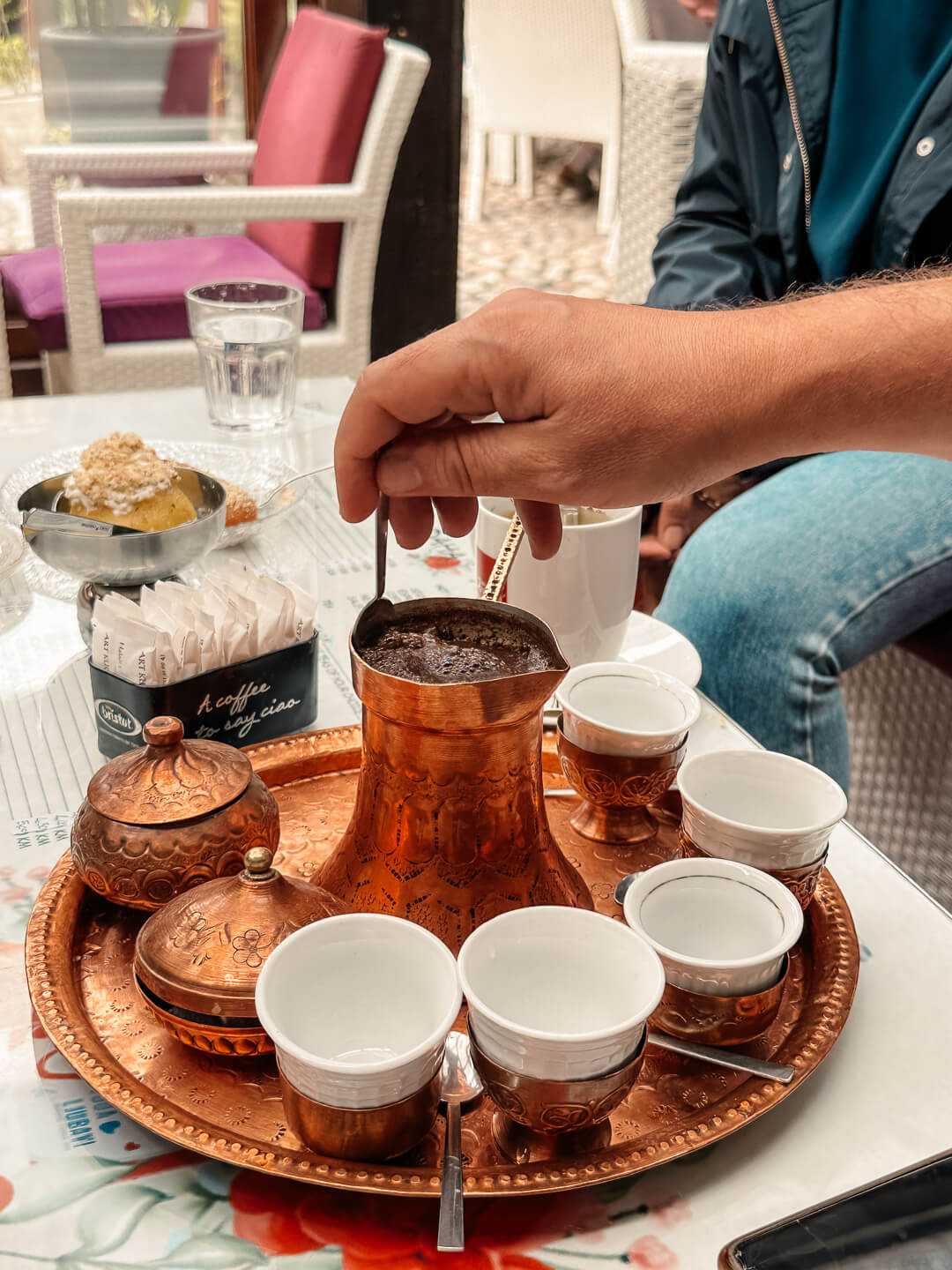
Last thoughts on Baščaršija
The fascination of Baščaršija lies in its unique atmosphere and rich history. Here you can feel the peaceful coexistence of religions and cultures like nowhere else in Sarajevo – after all, it is also clearly visible in the architecture. We hope this blog post has helped you plan your trip and we would be happy to meet you on one of our city tours .

